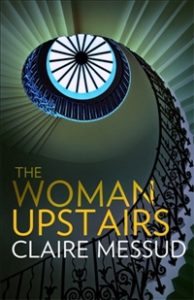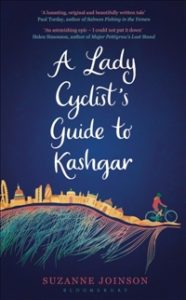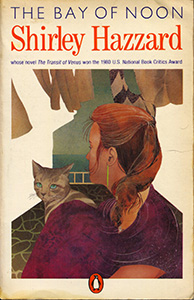 It is hard to pigeonhole this book, but in the end I can say that I loved it, even though at one stage I skipped a chapter in exasperation (and I never skip chapters). It is a testament to this novel that as soon as I finished it (weeping surreptitiously into a tissue), I went straight back to read the skipped chapter.
It is hard to pigeonhole this book, but in the end I can say that I loved it, even though at one stage I skipped a chapter in exasperation (and I never skip chapters). It is a testament to this novel that as soon as I finished it (weeping surreptitiously into a tissue), I went straight back to read the skipped chapter.
The novel starts with 52-year-old poetry professor, Elizabeth Stone, walking out of her oncologist’s office, and feeling the pulsing presence of aliveness – she’s just been told the tumour in her brain, is there no more.
Typically, Elizabeth does not go on the relaxing holiday prescribed by her doctor but straight to the British Library thinking about her next book, the follow up to her first, seminal, work on Milton. Going towards the reading room she’s distracted by a glass case containing an original of TS Eliot’s Burnt Norton. As though the manuscript is, in fact, burning, she can’t get it out of her mind.
Seeing this work by Eliot takes her back to her entrance interview to an Oxbridge college in the early 80s and the copy of Elliot (read aloud on tapes) that turns up in the mail in the cold home where she stays with her foster parents; the tapes are from Professor Hunt – the other professor of poetry, the one who could see the potential and the genius in the withdrawn, pale 17-year-old girl, who is so overwhelmed by Hunt in the interview that she can hardly speak:
… the words begin to stretch themselves across the room – or it may be a firmament and the words spheres, because music is a better way to describe the sounds that are lapping around her now … Spheres, words and room are swimming together; his voice dark, the paper pale, the letters flesh – or is the flesh letters? … the words are pattering like raindrops in a wood. Then she hears a voice say, ‘Are you all right?’ and he is propping her up.
The words collected themselves, the firmament vanishes, there is a humming in her ears.
Oh, dear reader, that is just the beginning of the most wonderful, wonderful story. McCleen is staggeringly erudite, it is such a pleasure to spend so much time in Professor Stone’s head, and the writing … (yes, it was the writing that made me skip that chapter so overblown, I thought, so detailed, so curlicued, so oblique) … the writing is wonderful – I just decided to go with it and I was swept up with its beauty.
After the sunlit hours in the garden, after the bustle of the high street, a warm front, a dusk front moves in. It seems to come from the river. It slips through arches, alleyways, gardens and quads, circles a chapel and passes a church, eddies the steps of a circular room with a roof bluer than the sky; you look up from your desk and it’s there, it’s happening, it’s all around you. Some small sigh of restlessness drawing things away, at the back of the evening, as the day reaches out to the night.
When you cry, when you want to go back and read over sections, when you want to buy your sister a copy, when you just feel dumbfounded at the achievement … well, I feel all those things about this book.










